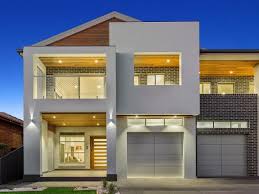Property Market Outlook
According to the latest QBE Australian Housing Outlook 2017-2020, an oversupply of units and reduced bank lending to investors is expected to dampen price growth in the housing market in coming years.
The QBE-commissioned BIS Oxford Economics report analyses historical performance in the residential housing market, based on median prices, and forecasts market movements through to 2020.
It predicts that an oversupply of apartments and changed lending conditions for investors – such as lower loan-to-value-ratios and higher interest rates for interest only loans – will dampen economic conditions and slow price growth.
Apartment prices are expected to fall but house prices in most major cities will rise modestly within the next three years – except Sydney, which is forecast to contract by -0.2% growth by 2020.
Cheaper units and reduced investor activity should mean that overall affordability will improve, which could assist more owner-occupiers and first-time buyers seeking to enter the market.
Source: QBE
Property trends towards units and first home buyers
QBE Lenders’ Mortgage Insurance CEO, Phil White, said the Australian dream of owning property is increasingly turning to apartments.
“Units contribute to a greater share of the market as changing lifestyles and affordability dictate property choices,” he said.
“With more lending restrictions impacting investors, it could be good news for owner-occupiers as they should find less competition from investors.”
The report shows that units have made up a larger share of new dwellings coming on to the market, accounting for 46% of all residential construction (even higher in major cities).
Although a weaker housing market over the next three years means rents are likely to drop too – making renting more appealing – the report does point to a rise in demand from first home buyers.
First home buyer loans declined by less than 1% in 2016/17, with signs of strengthening demand emerging – 13% more loans were approved to first home buyers within the three months to July 2017 compared to the prior year.
NSW Market Outlook
The Sydney has been undersupplied for more than a decade due to population growth fuelled by migration. The six years to June 2017 has seen an average annual increase in the median house price of 10.4%. It is only in the last 2 years that new dwelling supply has begun to outpace underlying demand but the market remains in undersupply.
Sydney
QBE expects house prices to decline by a cumulative 4% over the next few years as the retreat of investors limits overall demand. Improvements in dwelling supply will further ease demand from owner-occupiers.
Changes in lending policies and loans for investors has put a limit on home unit prices. As this effect further takes hold there is likely to be downward pressure on prices for units. Rental yields are at record lows. The large volume of apartments coming on to the market should push up vacancy rates easing the market for renters and continuing to dampen the return for investors.
Newcastle
Newcastle is an economy in change. Declines in coal sector investment are being largely offset by growth in the logistics an tourism sectors. Newcastle has experienced 7% annual growth over the past 5 years. Strong investment conditions mean that house price growth should continue into the next 12 months. QBE expects the median house price to increase by a cumulative 12% to $635,000 by June 2020.
Wollongong
The Wollongong market is driven by tourism, education and its proximity to Sydney. The Wollongong housing market has experienced average 13% annual growth in the 4 years to June 2017. Further price growth is expected over the next 12 months but generally it is expected that this market will plateau in the period through to 2020.
Future market at a glance: 2020 forecast
- Cash rate up to 1.75%, CPI growth increase to 2.7%
- Borrowing rates: Standard variable rate 5.5%; Interest only rate for investors 6.5%
- Brisbane apartment prices hit hardest by glut, set to fall 7%
- Modest house price growth, strongest in Canberra (16%) and Hobart (11%)
- Sydney median house price to decline, then return to $1,150,000 by June 2020.
Download and read the full report here.
Social Sharing
Disclaimer: This article is intended to provide general news and information only. While every care has been taken to ensure the accuracy of the information it contains, neither Loanscape nor its employees can be held liable for any inaccuracies, errors or omission. All information is current as at publication release and the publisher takes no responsibility for any factors that may change thereafter. Readers are advised to contact their financial adviser, broker or accountant before making any investment decisions and should not rely on this article as a substitute for professional advice.










Loanscape has today released its Borrowing Capacity Index for Q4/2024. It confirms the forecast trend that borrowing capacities of Australian individuals and families are recovering from their low levels which coincided with the last of the recent increases to borrowing rates initiated by the Reserve Bank of Australia.